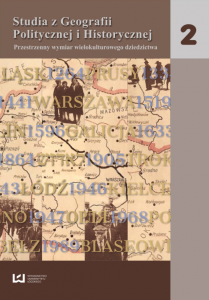Amazonian tribe Sateré-Mawe – between acculturation and assimilation
DOI:
https://doi.org/10.18778/2300-0562.02.07Keywords:
Brazil, Amazonia, Indians, Sateré-Mawé, acculturation, assimilationAbstract
In the article the processes of the assimilation and acculturation occurring among representatives of the Amazonian tribe Sateré-Mawé, which until recently remaining in isolation from the main society of the Brazil were analyzed. In the study were included both the part of tribe still living in the core area and part of them which migrated to the neighbourhood of the main urban centres of the Amazonia. Field observation was conducted in November 2006 in the area around the city of Manus and in a tribal village in municipality Iranduba on the Ariaú river which is a tributary of Rio Negro.References
Ariaú Amazon Towers, 2013: http://www.ariau.tur.br (1.10.2013).
Google Scholar
Bettendorff J.F., 1910, Crônica da missão dos padres da Companhia de Jesus no estado do Maranhão, Revista do Instituto Histórico e Geográfico de São João del Rei, 1, Rio de Janeiro.
Google Scholar
Bonasewicz A., 2010, Amazonia jako region geograficzny: przesłanki przyrodnicze i społeczno-gospodarcze, „Prace i Studia Geograficzne”, 44, s. 21–29.
Google Scholar
Botelho J.B., Weigel V.A.C.M., 2011, The Sateré-Mawé community of Y’Apyrehyt: ritual and health on the urban outskirts of Manaus, „História, Ciências, Saúde”, 18 (3), s. 723–744.
Google Scholar
DOI: https://doi.org/10.1590/S0104-59702011000300007
Budyta-Budzyńska M., 2010, Socjologia narodu i konfliktów etnicznych, PWN, Warszawa.
Google Scholar
Censo 2010: população indígena é de 896,9 mil, tem 305 etnias e fala 274 idiomas, 2012, Instituto Brasileiro de Geografia e Estatística, Brasilia.
Google Scholar
Cunha Fischer L.R. da, 2006, Os recortes na terra dos “filhos do guaraná”: implicações jurídicas das sobreposições de unidades de conservação na terra indígena Andirá-Maraú: http://www.conpedi.org.br (20.09.2013).
Google Scholar
Diretoria Executiva do Conselho Geral da Tribo Sateré-Mawé – CGTSM, 2011, Portal dos Filhos do Waraná: http://www.nusoken.com (2.09.2013).
Google Scholar
Fabre A., 2005, Diccionario etnolingüístico y guía bibliográfica de los pueblos indígenas sudamericanos, Kamasa.
Google Scholar
Glazer N.D., Moynihan D.P., Saposs-Schelling C., 1975, Ethnicity: theory and experience, Harvard University Press, Cambridge.
Google Scholar
Gordon A.M.M., 1964, Assimilation in American life: the role of race, religion and national origins, University Press, Oxford.
Google Scholar
DOI: https://doi.org/10.2307/3510186
Kairski M., Wołodźko M., 1997, Misjonarz i antropolog – twarzą w twarz. Problematyka inkulturacji społeczeństw pierwotnych Amazonii, „W Drodze. Miesięcznik poświęcony życiu chrześcijańskiemu”, 1, s. 15–25.
Google Scholar
Krysińska-Kałużna M., 2012, Yamashta czyli Ten Który Prawie Umarł, Oficyna Naukowa, Warszawa.
Google Scholar
Lei Arouca. 10 Anos de saudé indígena, 2009, Fundação Nacional de Saúde, Brasilia.
Google Scholar
Masters J., 2013, Sateré-Mawé, DICE Database for Indigenous Cultural Evolution, University of Missouri, Columbia: http://dice.missouri.edu/docs/tupi (22.09.2013).
Google Scholar
Palma Torres A., Zebrini F., Gomes R., 2010, Commerce equitable du guarana des Satere-Mawe territoire indien d’Indirá-Marau, Amazonie, Brésil. Evaluation des impacts de 10 ans de commerce equitable, Plateforme pour le Commerce Equitable: http://www.commercequitable.org/images/pdf/impact/etude_warana.pdf (1.10.2013).
Google Scholar
Park R.E., Burgess E.W., 1921, Introduction to the science of sociology, Chicago University Press, Chicago.
Google Scholar
Plano Territorial de Desenvolvimento Rural Sustentável. Terrotório Baixo Amazonas – Amazonas, 2010, Secretário de Desenvolvimento Territorial, Ministro de Estado do Desenvolvimento Agrário, Cáritas Arquidiocesana de Manaus. Estudo Técnico, Manus.
Google Scholar
Rodrigues A.D., 1958, Classification of Tupí-Guaraní, „International Journal of American Linguistics”, 24 (3), s. 231–234.
Google Scholar
DOI: https://doi.org/10.1086/464461
Sateré Mawé, 2012, Povos indígenas no Brasil: http://pib.socioambiental.org/en/povo/satere-mawe (18.09.2013).
Google Scholar
Sateré-Mawé, 2013, Ethnologue. Languages of the World: http://www.ethnologue.com/language/mav (19.09.2013).
Google Scholar
Sena R. de, Teixeira P., 2006, Movimentos migratórios da população Sateré-Mawé – povo indígena da Amazônia brasileira, XV Encontro Nacional de Estudos Populacionais, Caxambu, Minas Gerais.
Google Scholar
Tate Z., 2010, The eyes of the forest, Cultural Survival. Partnering with Indigenous Peoples to Defend their Lands, Languages, and Cultures: www.culturalsurvival.org (1.10.2013).
Google Scholar
Teixeira P., 2005, Sateré-Mawé retrato de um povo indígena, Universidade Federal do Amazonas, Fundação Estadual de Política Indigenista do Amazonas, UNICEF. Manaus.
Google Scholar
Teixeira P., Brasil M., 2005, Estudo Demográfico dos Sateré-Mawé: um exemplo de censo participativo [w:] Pagliaro H., Azevedo M.M., Santos R.V. (red.), Demografia dos povos indígenas no Brasil, Fiocruz, Rio de Janeiro, s. 135–154.
Google Scholar
DOI: https://doi.org/10.7476/9788575412541.0008
Teixeira P., Brasil M., Silva E.M. da, 2011, Demografia de um povo indígena da Amazônia brasileira: os Satére-Mawé, „Revista Brasileira de Estudos de População”, 28 (2), s. 429–448.
Google Scholar
DOI: https://doi.org/10.1590/S0102-30982011000200011
Teixeira P., Sena R. de, 2008, As migrações entre os Sateré-Mawé, povo indígena da Amazônia brasileira, XVI Encontro Nacional de Estudos Populacionais, Caxambu, Minas Gerais.
Google Scholar
Wright T., 2012, The 8 most bizarre rituals in the World, Vagabondish: www.vagabondish.com/8-bizarre-rituals-world (1.10.2013).
Google Scholar
Downloads
Published
How to Cite
Issue
Section
License

This work is licensed under a Creative Commons Attribution-NonCommercial-NoDerivatives 4.0 International License.








